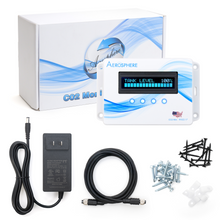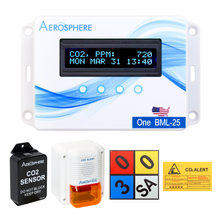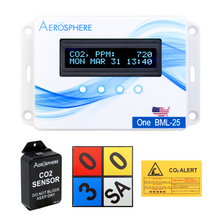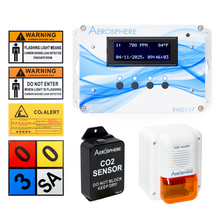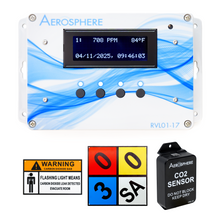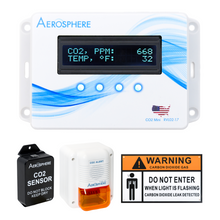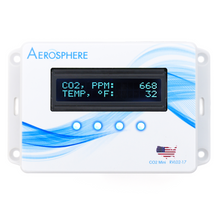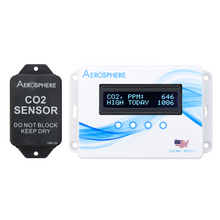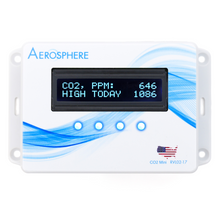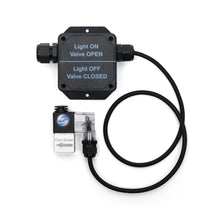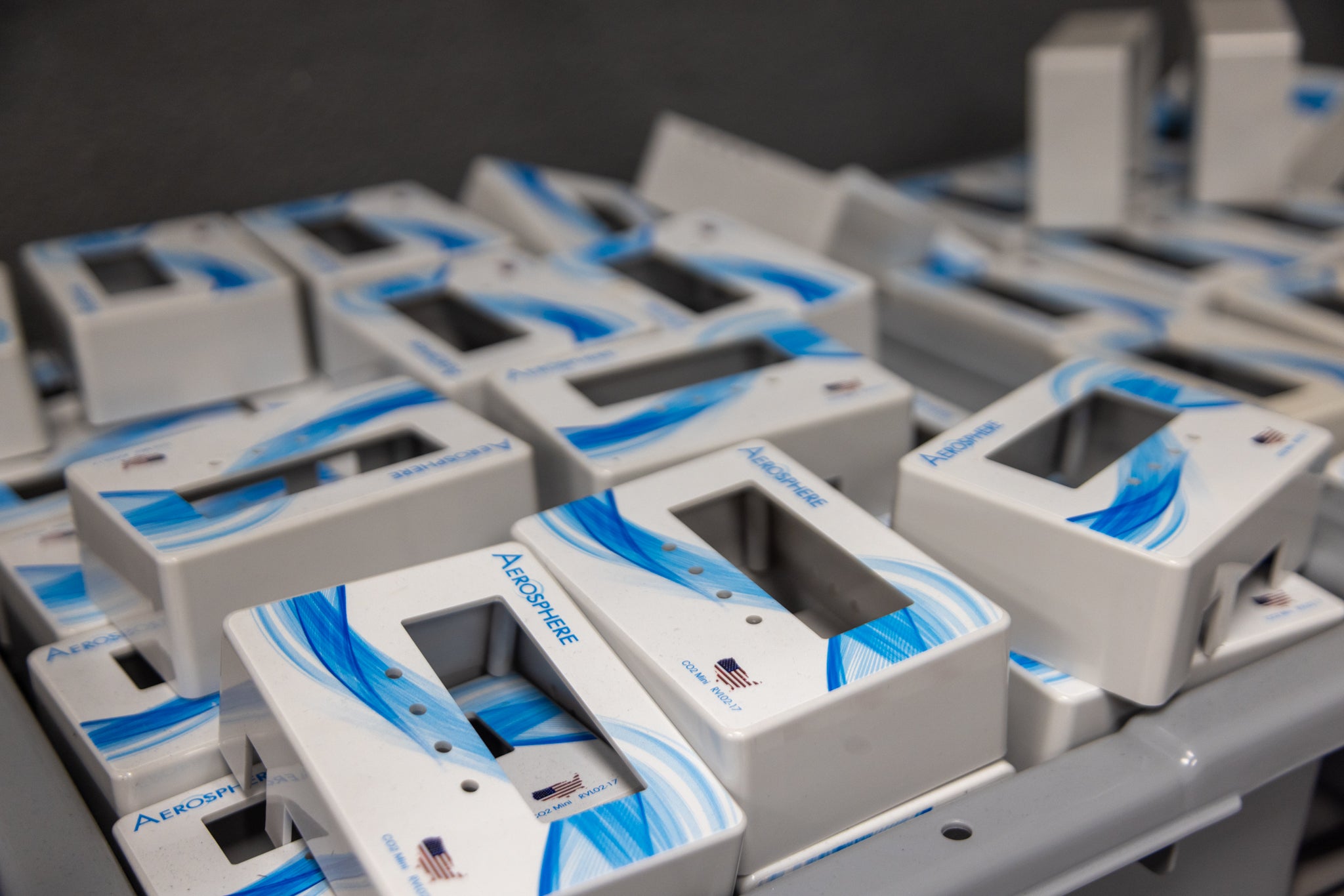The CO2 Compliance Process Explained: Inside the Departments at CO2 Monitoring
At CO2 Monitoring, every department plays a critical role in keeping businesses safe and compliant. From estimations and drafting to scheduling, operations, and corporate account management, each team contributes unique expertise that ensures projects move smoothly from start to finish. This article highlights the leaders behind our process, showcasing how their dedication and collaboration make CO2 compliance simple, seamless, and effective for our customers.
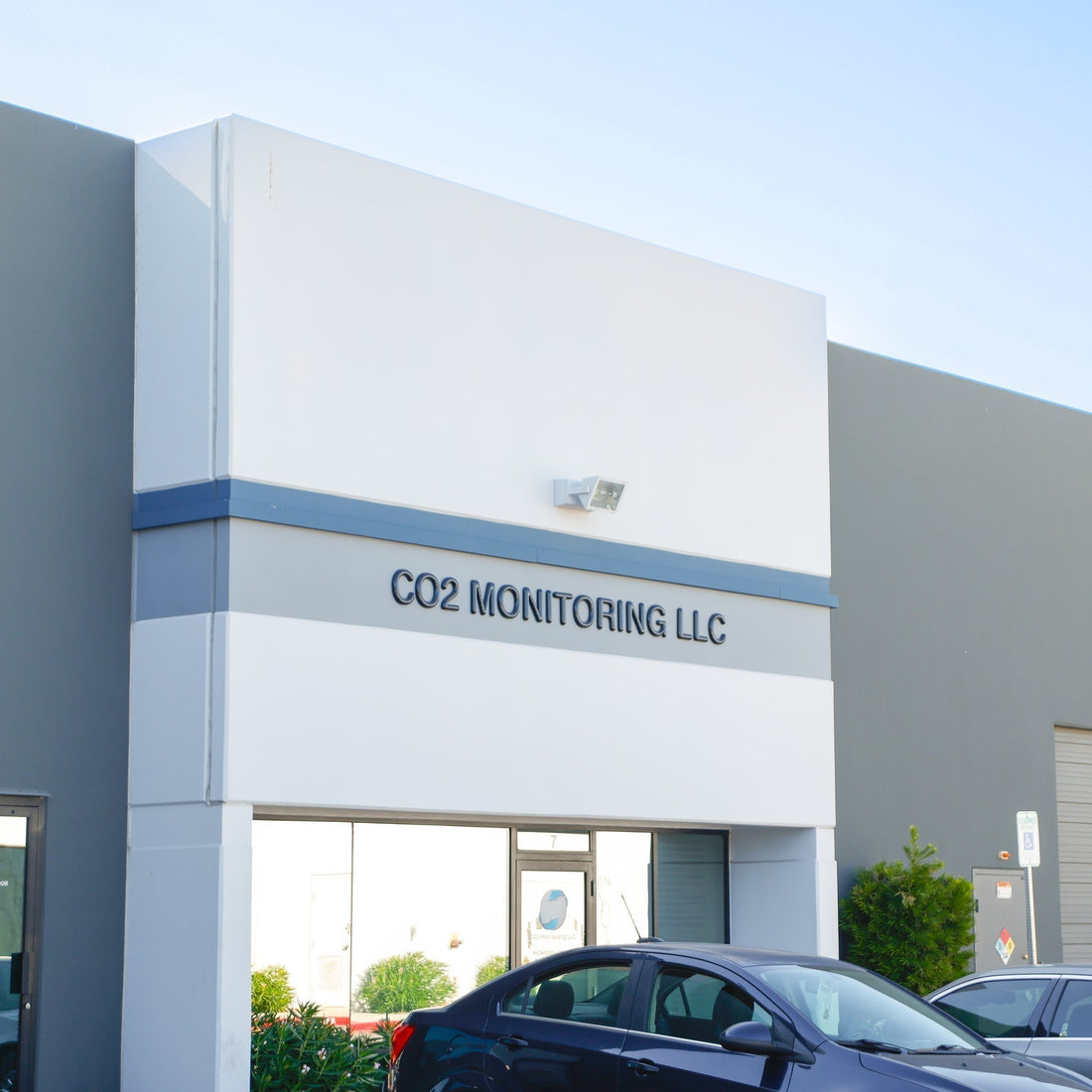
At CO2 Monitoring, creator of Aerosphere®, our greatest strength lies in how we manage compliance from start to finish. Every project requires coordination across multiple departments, and our process is designed to ensure accuracy, efficiency, and safety at every step. From the moment a client reaches out for a CO2 permit diagnosis to the final inspection and annual recertification, our team works seamlessly together, each department bringing specialized expertise to the table.
This article takes you behind the scenes to meet the people leading those departments. You’ll learn who they are, the challenges they solve, and how their work contributes to keeping our clients safe, compliant, and ahead of regulatory requirements.
Head Travel Technician/ Field Tech Manager
Who They Are
At CO2 Monitoring, our technicians play a vital role in ensuring safety and compliance for every customer we serve. Led by our Field Tech Manager and Head Travel Technician
Bradyn Butler, the team spends their days on the road, installing monitors, meeting new people, and building strong relationships along the way. What makes this work so rewarding are the stories and experiences shared by the techs as they travel to new places and connect with different communities. Beyond the travel, their work provides customers with confidence and peace of mind, knowing that each installation adds an extra layer of protection for their business, staff, and patrons. With unmatched skill, knowledge, and dedication, our technicians set CO2 Monitoring apart, delivering both the quality and the quantity of service that few others in the industry can match.
Questions & Answers
-
What do you look for during a CO2 compliance site survey, and how do you prepare the site for inspection readiness?
- When conducting site surveys, technicians carefully identify what equipment needs to be monitored and permitted, including every point of use for CO2 and any pressure vessels. Preparing a site for inspection readiness actually begins at the very start of installation. From the beginning, our technicians focus on how to install monitors in a way that meets the specific jurisdiction’s requirements while also preserving the look and flow of each store. Every detail is double and triple checked to ensure the installation is completed as close to perfection as possible.
-
What kinds of challenges or delays do you encounter during surveys or installations, and how do you handle them on-site?
- The most common challenges our team faces are working in tight or hard-to-reach spaces. Many businesses are not built with ease of installation in mind, and these issues far outpace other obstacles such as stores still under construction, denial of access, or receiving the wrong materials. No matter the challenge, our technicians adapt on-site to find solutions that keep the project moving forward.
-
From your perspective, what does the final inspection process involve, and how does your team support successful sign-off?
- Final inspections are often the most stressful part of the job, since they determine official approval of the work. During this process, our technicians meet with the local inspector, sometimes even the chief of that jurisdiction, to present the installation in detail. We provide professionally drawn plans of the site, walk through the entire location, and demonstrate the time and care invested into each monitor. Every detector is then tested by simulating a CO2 leak, confirming all three levels of alarm response even though only two are typically required by code. Once the inspector is satisfied and everything is verified, approval comes in the form of a signature and permits issued, serving as recognition of a successful, compliant installation.
Estimations Manager
Who They Are
As Estimations Manager, David Rudisill oversees the department to ensure comprehensive and timely submissions of quotes across a wide range of projects. His work often begins with reading plan sets and tackling complex problem-solving, which he enjoys most about his role. David and his team are usually the first point of contact for customers when it comes to understanding what their jurisdiction will require for CO2 monitoring in their establishment, setting the stage for compliance and safety from the very beginning. He takes pride in how this groundwork helps customers move forward with confidence, knowing they are prepared for regulatory requirements. For David, what sets CO2 Monitoring apart is the ease of use designed into every product, which simplifies compliance for clients while maintaining the highest safety standards.
Questions & Answers
-
How do you determine what equipment is needed for a specific site and what variables affect the cost or complexity of a CO2 installation?
- We work closely with our drafting team and rely on their jurisdiction list, which is frequently updated as new information becomes available. This ensures that every estimate is based on the most current compliance requirements and site-specific conditions.
-
How do you ensure each estimate reflects the unique requirements of that jurisdiction?
- Again, collaboration with our drafting team is key. Their jurisdiction list serves as the foundation for our estimates, helping us align equipment, design, and installation needs with the exact codes and standards that apply to the project’s location.
-
How do you track and manage annual renewals for customers?
- Our recertification specialist, Melody, maintains detailed records and uses QuickBase to track renewals. This system keeps everything organized and ensures nothing slips through the cracks.
-
What trends have you noticed that affect renewal timelines or approvals?
- We’ve seen a growing reliance on online submission portals for renewal paperwork. While this can streamline the process in some cases, it also means staying vigilant about portal-specific requirements and deadlines.
Drafting Department
Who They Are
The Drafting team transforms technical requirements into precise plans that meet the standards of city, state, and fire department authorities. Their work is essential to creating fully code-compliant drafting plans, ensuring that every detail is documented correctly from the start. To prepare these plans, the team relies on key information including a detailed and accurate site survey with all equipment identified, the designated CO₂ provider, bulk tank size, and the required documentation such as U1A forms and NB403 paperwork for older tanks. They also need to know the locations of equipment like BIB racks, tanks, fill boxes, soda dispensers, carbonators, kegerators, soda guns, and beer coolers to ensure accuracy in the design.
By collecting and organizing this information, the Drafting Department creates precise layouts and permit drawings that guide installations through to approval, helping projects stay on schedule and fully compliant. Their collaboration with estimations, technicians, and operations ensures every project moves seamlessly from planning to execution.
Scheduling Manager
Who They Are
As Scheduling Manager, Tammy Wininger oversees the daily coordination that keeps projects on track and customers supported. Her role spans everything from arranging service appointments and inspections to booking travel for technicians, managing vehicle maintenance schedules, and ensuring seamless communication between customers and internal teams. Tammy thrives on bringing structure and clarity to a fast-paced environment, guiding her team through complex scheduling challenges and keeping both clients and technicians aligned. What she finds most rewarding is helping others stay organized, mentoring her team, and ensuring every customer interaction is handled with care. Beyond logistics, Tammy’s department plays a direct role in customer safety by empowering technicians with the information they need to explain why life safety systems are essential. For Tammy, what sets CO2 Monitoring apart is the passion and dedication of President Ron Longley, whose leadership emphasizes not only how compliance is achieved, but why it matters. That commitment to education and safety defines the company’s credibility and makes its work truly life-saving.
Questions & Answers
-
How does your team manage ongoing compliance for recurring clients, including tracking submission deadlines, renewals, and permit expirations?
- Each week, my team reviews our scopes to make sure everything is moving on schedule. When a permit is close to expiring, we get an automated notification from Plans, and that’s our signal to check the status of the project. If the location is ready for final inspection, we make that the priority before the permit runs out. Of course, there are times when construction delays are out of our control, and a permit may expire despite our efforts. In those situations, we document the reason and stay in constant communication so we can reschedule as soon as the site is ready.
-
What types of clients or regions do you typically support, and how do permitting requirements vary across locations?
- We support clients across the country. Some smaller states don’t require permitting, but we always call to confirm whether an inspection is still needed. Those calls usually lead to questions about what we do and why it matters, which often turns into a training opportunity for Ron and Tori to step in and explain the importance of compliance.
-
What do most customers misunderstand about the permitting process, and how do you make it easier for them?
- A lot of customers don’t realize how long the permitting process actually takes. Some try to pull permits on their own and quickly learn that submittals have to be drafted by a professional. When those permits get rejected, they’re often stuck and don’t know how to fix the corrections, so they come back to us. That’s where we step in, take over the project, and make sure everything gets submitted properly to keep them on track.
- A lot of customers don’t realize how long the permitting process actually takes. Some try to pull permits on their own and quickly learn that submittals have to be drafted by a professional. When those permits get rejected, they’re often stuck and don’t know how to fix the corrections, so they come back to us. That’s where we step in, take over the project, and make sure everything gets submitted properly to keep them on track.
Tank Specialist
Who They Are
As Tank Specialist, Babette Fisher manages the full lifecycle of CO2 tanks, from inbound processing to installation readiness. Her day-to-day work includes coordinating incoming tanks, handling refurbishments, ordering and tracking compliance documentation, and ensuring every tank meets strict regulatory standards before installation. Babette values the independence and responsibility her role provides, taking pride in overseeing tanks from assignment to successful installation and state approval. What she finds most rewarding is helping customers meet critical project timelines, whether ensuring tanks are ready for a new construction opening or maintaining compliance for ongoing operations. For Babette, what sets CO2 Monitoring apart is its forward-thinking approach to safety compliance. She appreciates being part of a team that provides an essential yet often overlooked service that not only supports businesses but also protects employees and the public.
Questions & Answers
-
How does your team manage ongoing compliance for recurring clients, including tracking submission deadlines, renewals, and permit expirations?
-
I manage ongoing compliance by monitoring key milestones such as submission deadlines, renewals, and permit expirations. This involves:
- Tracking critical dates in our internal systems to ensure timely submissions and renewals
- Coordinating with technicians and other teams to secure required documentation and inspections before deadlines
- Maintaining organized records in QuickBase and other systems to keep compliance information accurate and up to date for each client
-
-
What types of clients or regions do you typically support, and how do permitting requirements vary across locations?
- We support a wide range of clients, from independent restaurants to large-scale operations like casinos and grow facilities. Our focus is making sure each site, regardless of size or complexity, maintains full compliance. Since permitting requirements vary by jurisdiction, our drafting team works closely with local authorities to ensure every project meets the necessary regulations. That collaboration allows us to submit the right documentation, secure approvals, and maintain safety compliance across all locations.
-
What do most customers misunderstand about the permitting process, and how do you make it easier for them?
-
The most common misunderstanding is the timeline. Permitting is not a quick process as projects must first be drafted accurately before submission, and jurisdictions often request revisions or additional details, which can extend approval by several weeks.
Clearer communication can help manage these expectations. For instance, if QuickBase could send automated updates as a job progresses, customers would feel more informed and reassured that their project is moving forward.
-
Operations Manager
Who They Are
At CO2 Monitoring, Operations Manager Valentina Coronado plays a central role in keeping the entire system running smoothly. She oversees inventory, purchasing, shipping, receiving, and manufacturing to ensure that both customers and technicians have what they need, when they need it. A typical day for Valentina includes managing stock levels, supporting production with accurate BOMs and task assignments, monitoring quality control, and coordinating weekly shipments to restock technician trucks nationwide. What makes her role so rewarding is seeing how all these moving parts come together to keep operations efficient, installations on schedule, and customers protected through the timely delivery of reliable CO2 detection systems.
Questions & Answers
How do you coordinate with technicians to manage truck inventories and ensure they have the specialty equipment needed for each job?
-
What’s your process for managing and maintaining stock levels across warehouse and truck inventory, and in-house production needs?
- I created a real-time spreadsheet for technicians to complete their weekly truck counts. Once they update it, I can immediately see their current inventory and compare it to the standard levels each truck should carry. Based on that, I prepare and send the missing materials, so their stock is complete. This process makes coordination fast and accurate, ensuring technicians always have the specialty equipment they need for each job.
-
What’s your process for managing and maintaining stock levels across warehouse and truck inventory, and in-house production needs?
- I monitor inventory levels daily and perform monthly random counts to verify accuracy. For truck inventory, I use the real-time spreadsheet system I created, which allows me to instantly track each technician’s stock and identify what needs replenishment. For manufacturing, I create BOMs and pick tickets to track material usage. Weekly technician shipments are planned alongside customer orders, ensuring both field and production needs are met. This system helps balance stock, avoid shortages, and maintain efficiency across all operations.
-
As the lead for our manufacturing team, how do you ensure that in-house production meets quality standards and stays aligned with service compliance requirements?
- I build quality into the production process from the start, rather than relying only on final inspections. Each project follows a detailed BOM, and the team receives clear instructions regarding materials and procedures. I oversee production schedules, assign tasks based on each operator’s skills, and monitor metrics such as units produced and efficiency. Quality checks are performed throughout production, allowing us to catch potential issues early and ensure that every CO2 system meets internal standards and complies with regulatory requirements.
-
How do you make sure each system is packaged and shipped with the correct components, labels, and documentation required for a successful installation and inspection?
- Each kit is prepared in advance and assembled according to a detailed BOM, with a unique serial number included inside the box. When an order comes in, the pick ticket allows the warehouse team to quickly select the correct kit and verify the serial numbers. Then, we record the box size and weight to generate the shipping label. This organized method ensures shipments are accurate, complete, and ready for installation and inspection, minimizing the risk of errors.
Corporate Account Specialist
Who They Are
As a Corporate Account Specialist, Brittney Turturro manages national accounts like 7-Eleven, ensuring complex projects stay organized and on track. Her day-to-day involves balancing emails, spreadsheets, and direct customer communication while coordinating across multiple departments to keep everything moving smoothly. For Brittney, the most important part of her role is maintaining clear, open lines of communication with customers, building trust and ensuring they always feel supported. She knows this consistency not only reduces delays but also strengthens long-term relationships. What makes her work impactful is how it directly contributes to customer safety by keeping projects on schedule and compliance requirements met. Brittney believes what sets CO2 Monitoring apart is the company’s commitment to handling every aspect of compliance. From manufacturing the Aerosphere system to managing permitting, installation, and annual recertifications, she sees the company’s role as a complete one-stop shop for CO2 compliance, simplifying the process for customers and giving them peace of mind.
Questions & Answers
-
What types of clients or regions do you typically support, and how do permitting requirements vary across locations?
- I primarily support large corporate clients with locations nationwide, helping them manage compliance across multiple jurisdictions.
-
What do most customers misunderstand about the permitting process, and how do you make it easier for them?
- Many clients underestimate how long the permitting process can take. To simplify things, I make sure all required information is collected upfront and keep them consistently updated throughout the process so there are no surprises.
Compliance isn’t just about meeting regulations — it’s about protecting lives, businesses, and the future of every client we serve. Each department at Aerosphere plays a critical role in that mission, ensuring that projects move smoothly from the first call to the final sign-off.
By uniting deep technical expertise with a process built on trust and precision, we deliver more than a service — we deliver peace of mind.
If your business needs CO2 compliance support, let our specialists guide you every step of the way.
👉 Explore our full range of services here

